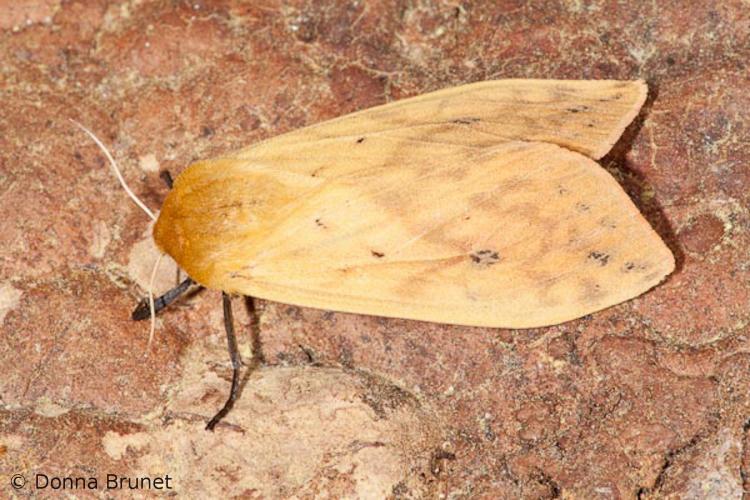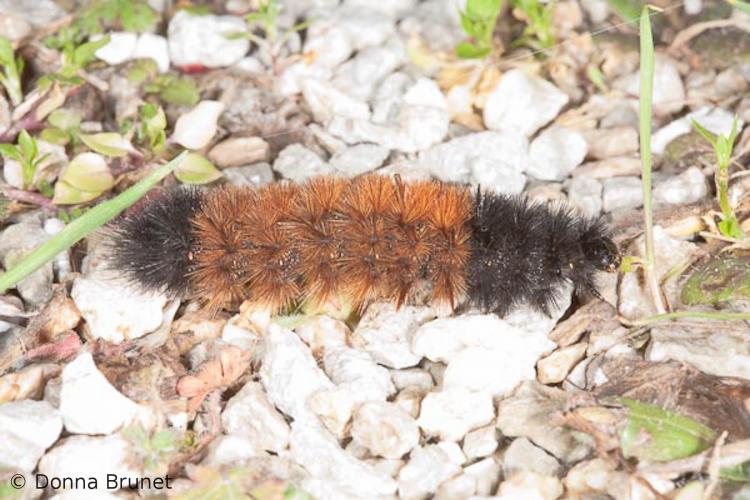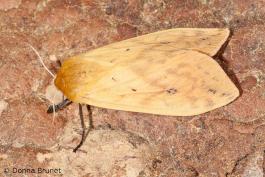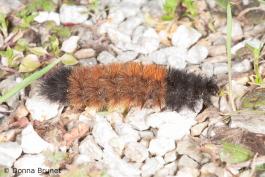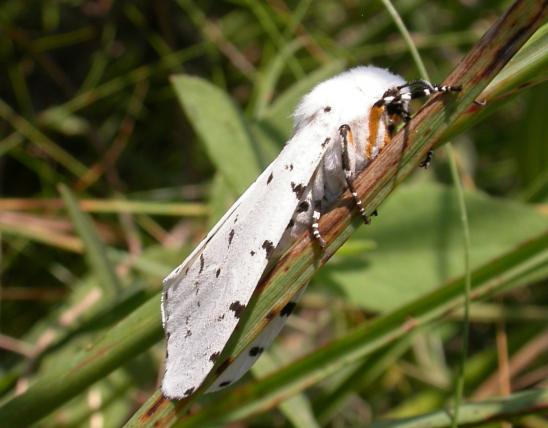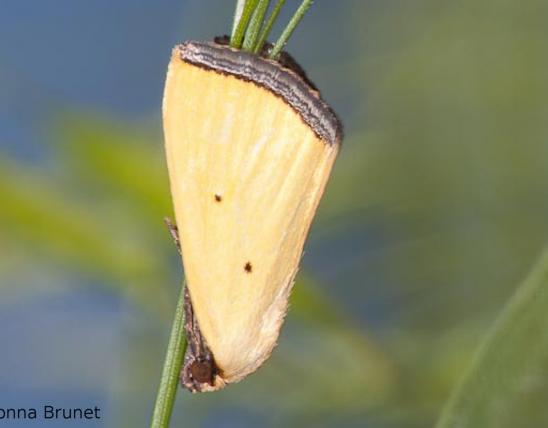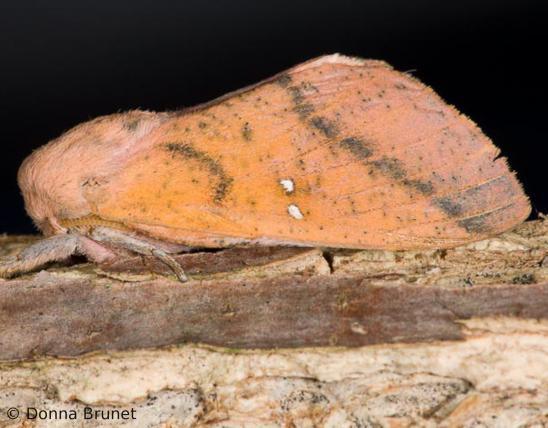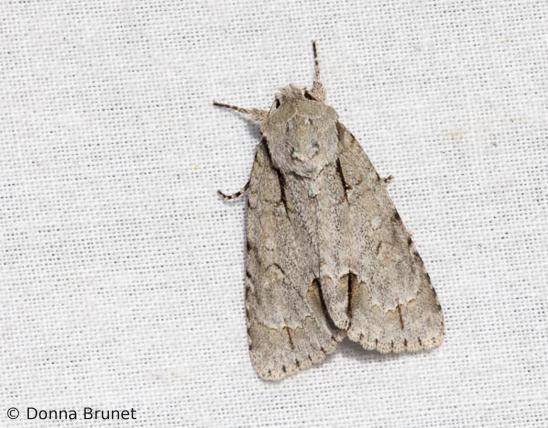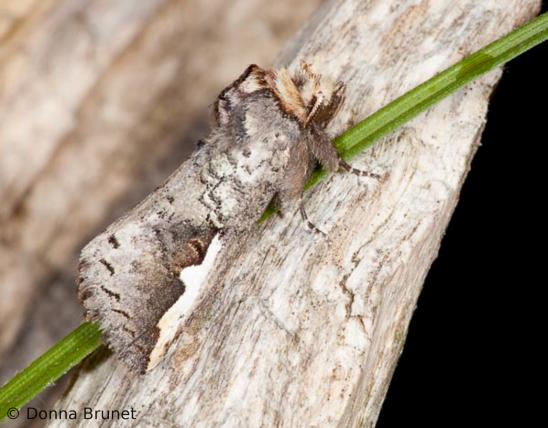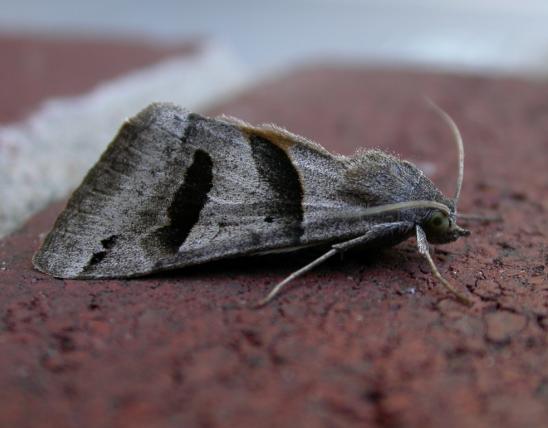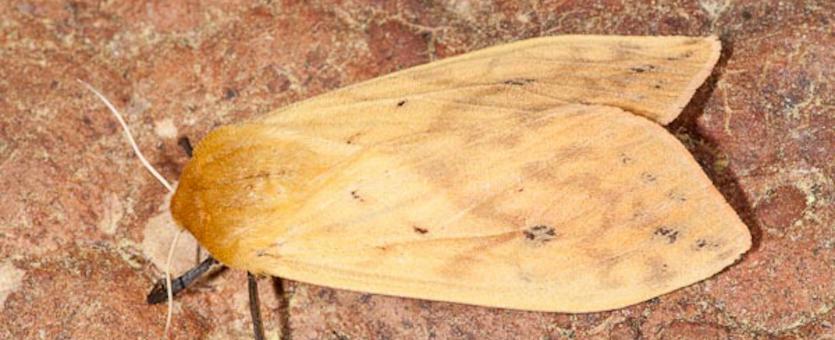
Adult Isabella tiger moths usually rest with the wings held rooflike over their bodies, or else held flat out to the sides. The forewings are yellow or tan, pointed, and often have faint lines and small dark spots. Hindwings are lighter and are orange in females. The bases of the forelegs are reddish orange.
The larvae of this species are better known than the adults. Called “woolly bears” or “woolly worms,” they are fuzzy with dense, stiff hairs. They are usually black on the ends of the body and rusty red or brownish in the middle. When disturbed, they commonly roll up in a ball. Note that touching the bristles can cause dermatitis in some people.
There are about 60 species of tiger moths in Missouri.
Wingspan: 1¾–2¼ inches.

Statewide.
Habitat and Conservation
Tiger moths are often attracted to lights at night. Based on the caterpillars’ wide range of food plants, this moth could be found almost anywhere that plants grow. In the autumn, woolly bears are commonly seen crossing roads as they search for sheltered places in which to overwinter.
Food
Larvae feed on a wide variety of plants, including maple and elm trees, grasses, sunflowers, clovers, and more.
Status
Common breeding resident.
Life Cycle
Adults fly from early April through September. There are two broods in Missouri. Isabella tiger moths overwinter as full-grown caterpillars and have a remarkable capability to withstand freezing temperatures. They pupate within cocoons made from their hairs and emerge as adults in the spring.
Human Connections
Several woolly bear festivals are held in towns across America. These help local economies and build a sense of community. Folklore has long maintained that the varying widths of the caterpillar’s bands are useful for predicting the harshness of the next winter, adding to this animal’s mystique.
Generally, the folklore goes like this: the wider the rusty-red band, the milder the winter; if it is narrow, the winter will be severe.
Most people do not get a rash from touching the hairy caterpillars of this species, but some people do. Different people may be more or less sensitive to caterpillar hairs, and some caterpillars may be more or less irritating than others.
Note that in other groups of moths, the caterpillars' hairs or spines can literally sting you, if you touch them. No matter how soft and fuzzy a caterpillar looks, we advise caution if you're not sure about a caterpillar's identity, or about your own skin's sensitivity.
Ecosystem Connections
The caterpillars are herbivores that graze on vegetation. They, like many other moth caterpillars, can be parasitized by wasps that lay their eggs on them and eventually kill them. The adults don’t live very long, but they too can be eaten by predators ranging from spiders to bats.
The amount of black and rusty red on a woolly bear caterpillar is influenced by several factors. Indeed, some of the factors are climatic. For example, wetter than average weather tends to cause longer black bands. Another factor is age: older caterpillars tend to have longer rusty red bands. Individual genetics also plays a role.
